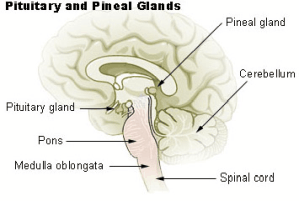Headaches and Empty Sella Syndrome (Intrasellar Arachnoidocele)
Empty sella syndrome (ESS), or empty sella turcica, is a rare condition in which the sella turcica, a depression in the skull, is partially or completely filled with cerebrospinal fluid, resulting in a displacement or flattening of the pituitary gland.
The common name is a strange one, since the sella is not actually empty, which is why it’s also called intrasellar arachnoidocele. But you can see why many prefer the simpler empty sella syndrome, or ESS.
ESS may have a known cause, making it “secondary”. It could be a trauma to the head, a tumour, infection, radiation therapy, or some types of surgery. It could also be “primary”, with no apparent cause.
ESS is rare, and usually goes unnoticed, with no noticeable symptoms at all. But in some cases there are symptoms including – you guessed it – chronic headaches.
There are more likely to be symptoms with secondary ESS, because there are other issues that may cause a problem. But primary ESS is hard to catch. It’s usually found when your doctor isn’t looking for it, through a CT or MRI. Your doctor may also do a lumbar puncture or retinal exam to check for pressure.
Even when it comes to chronic headaches, it is questioned how often the headaches are a result of the ESS, or how often they’re simply coincidental.
When ESS is severe, it could cause high blood pressure, and high fluid pressure in the head. The fluid may even leak out through the nose. The cranial pressure could cause vision problems, even partial blindness.
ESS could actually affect the functioning of the pituitary gland, and lead to symptoms such as decreased sex drive, fatigue, and difficulty staying warm.
If these severe symptoms are present, it may tip your doctor off. But if you just have chronic headaches, it’s likely few doctors would look for ESS specifically, because it’s so rare. However, some symptoms may lead them to check for cranial pressure. For example, you may find your headaches decrease when you’re lying down.
ESS is also more common in obese middle-aged people, and slightly more common in females.
Since ESS is so often symptom-free, even if you have it your headaches may not be connected. You’re most likely to need treatment for the headaches, and not specific treatment of ESS.
There have been some studies into surgery for ESS, in severe cases, and the surgery has helped some people.
For more information on ESS, check out empty sella syndrome and Review of empty sella syndrome and its surgical management.
